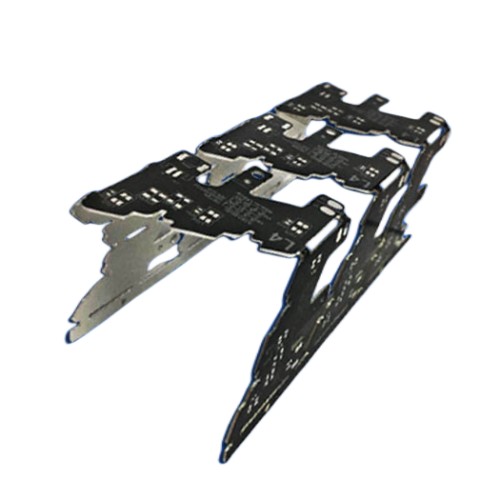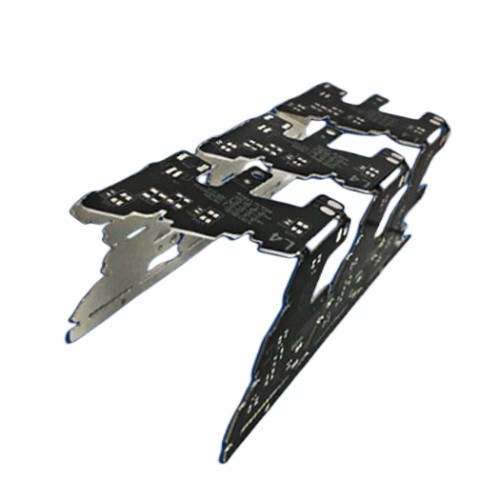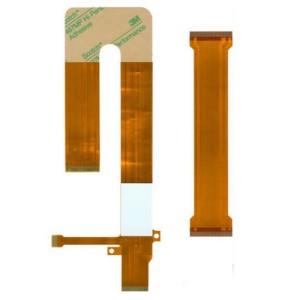Description
Bendable aluminum PCB
surface finish:OSP
board thick:1.0MM
Pressure resistant:AC1000-2500V
Production Process:Exposure
copper thickness:2OZ
Quality certification:ULE354470/ISO/SGS/IATF16949
Thermal conductivity:2.0w/m.k
soldermask:blacksurface finish:OSP
E-Test
100% Computer open short circuit test
lead time:5-7working days

Bending aluminum substrate. Here is some information about bending aluminum substrate:
- Structure and materials: The bending aluminum substrate usually consists of an aluminum base layer, an insulation layer, and a circuit layer. The aluminum base layer provides good electrical conductivity and heat dissipation, and the insulation layer is used to isolate the circuit, and the circuit layer carries the circuit traces.
- Bendability: The characteristic of the bending aluminum substrate is that it can be bent or curved to a certain extent to adapt to different shapes and installation requirements. This bendability gives it an advantage in some applications that require a special shape or limited space.
- Application fields: Bending aluminum substrates are often used in LED lighting, automotive lights, electronic equipment, medical devices and other fields. For example, in LED lighting, the bending aluminum substrate can be used to make various shapes of light boards to provide better heat dissipation and optical performance.
- Manufacturing process: Manufacturing a bending aluminum substrate usually involves processes such as the processing of aluminum plates, the coating of insulation layers, and the production of circuit layers. The specific manufacturing process may vary depending on different manufacturers and product requirements.
- Points for attention: When using a bending aluminum substrate, attention needs to be paid to the radius and angle of bending to avoid damage to the substrate. In addition, it is also necessary to select appropriate parameters such as substrate thickness, thermal conductivity, and electrical performance according to the specific application scenario.
If you need more detailed and accurate information, it is recommended to refer to the relevant product specification sheets or consult a professional circuit board manufacturer.
- Structure and materials: The bending aluminum substrate usually consists of an aluminum base layer, an insulation layer, and a circuit layer. The aluminum base layer provides good electrical conductivity and heat dissipation, and the insulation layer is used to isolate the circuit, and the circuit layer carries the circuit traces.
- Bendability: The characteristic of the bending aluminum substrate is that it can be bent or curved to a certain extent to adapt to different shapes and installation requirements. This bendability gives it an advantage in some applications that require a special shape or limited space.
- Application fields: Bending aluminum substrates are often used in LED lighting, automotive lights, electronic equipment, medical devices and other fields. For example, in LED lighting, the bending aluminum substrate can be used to make various shapes of light boards to provide better heat dissipation and optical performance.
- Manufacturing process: Manufacturing a bending aluminum substrate usually involves processes such as the processing of aluminum plates, the coating of insulation layers, and the production of circuit layers. The specific manufacturing process may vary depending on different manufacturers and product requirements.
- Points for attention: When using a bending aluminum substrate, attention needs to be paid to the radius and angle of bending to avoid damage to the substrate. In addition, it is also necessary to select appropriate parameters such as substrate thickness, thermal conductivity, and electrical performance according to the specific application scenario.
If you need more detailed and accurate information, it is recommended to refer to the relevant product specification sheets or consult a professional circuit board manufacturer.






